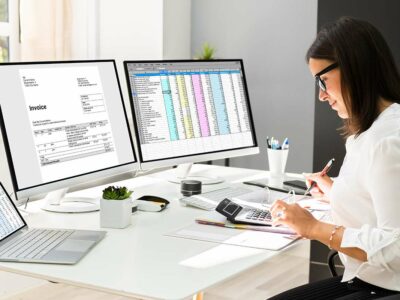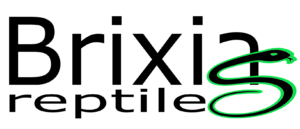Trade and Nontrade Receivables Current or Non Current

While accounts receivable represent amounts customers owe for goods or services provided on credit, notes receivable arise from formal agreements requiring repayment of a specific amount plus interest. The What is bookkeeping payee of a note receivable is the company or individual expected to receive payment from the debtor. Unlike accounts receivable, which are usually paid off within one year, a note receivable can have time to pay that extends beyond the year of the balance sheet date.
- They are reported in the current asset section if the note’s remaining principal will be collected within a year, otherwise in the noncurrent asset section.
- Regularly reviewing your accounts receivable aging report allows you to identify potential issues early on and take prompt action if necessary.
- While Notes Receivables have clear advantages and disadvantages depending on your business needs and goals – so it’s essential to weigh them carefully before deciding whether this financial instrument makes sense in your procurement strategy.
- You should classify a note receivable in the balance sheet as a current asset if it is due within 12 months or as non-current (i.e., long-term) if it is due in more than 12 months.
- To sum up, notes receivable can be beneficial for businesses looking to improve their cash flow and expand their operations.
Create a free account to unlock this Template
After all, assets are things owned or controlled by the organization, and liabilities are amounts owed by the organization; listing those amounts in the financial statements provides valuable information to stakeholders. But we have to dig a little deeper and remind ourselves that stakeholders are using this information to make decisions. Providing the amounts of the assets and liabilities answers the “what” question for stakeholders (that is, it tells stakeholders the value of assets), but it does not answer the “when” question for stakeholders. For example, knowing that an organization has $1,000,000 worth of assets is valuable information, but knowing that $250,000 of those assets are current and will be used or consumed within one year is more valuable to stakeholders.
How can we determine if a company has uncollectible accounts?

If repayment is due within one year (or the operating cycle of the business), they’re considered current assets; otherwise, they fall into the non-current category. There are many reasons why a business might have notes receivable in its accounting records. For example, if a customer is unable to pay for goods or services upfront but still wants to make the purchase, the company may agree to accept a note instead of cash. Alternatively, companies might issue notes as part of financing transactions or investments.
![]()
Do you own a business?
- It is common knowledge that money deposited in a savings account will earn interest, or money borrowed from a bank will accrue interest payable to the bank.
- The payee of a note receivable is the company or individual expected to receive payment from the debtor.
- When you’re a Pro, you’re able to pick up tax filing, consultation, and bookkeeping jobs on our platform while maintaining your flexibility.
- 11 Financial may only transact business in those states in which it is registered, or qualifies for an exemption or exclusion from registration requirements.
- Amortization allows a company to take that portion of an uncollectible account that is deemed to be impaired and account for it as though it were a sale of goods or services.
- The $18,838 is recovered over the life of the note as interest income ($8,928 + $9,910).
- The amortized discount is added to the note’s carrying value each year, thereby increasing its carrying amount until it reaches its maturity value of $10,000.
If the compensation covers services extending over several years, it would be appropriate to establish a Prepaid Expense account, which would be amortized over those years. Effectively, the transaction is accounted for as if the officer received $18,838 as outright compensation and loaned $81,162 at 11%. If the realistic rate for January 2021 is 11%, then this person has received a substantial benefit and the company has incurred a substantial cost. For example, if a firm loans cash to a supplier or an officer without charging any interest, it loses the income that it could have earned by investing elsewhere. Assets expected to be converted to cash or used up within one year or one operating cycle.
- Alternatively, the note may state that the total amount of interest due is to be paid along with the third and final principal payment of $100,000.
- The information contained herein is not intended to be “written advice concerning one or more Federal tax matters” subject to the requirements of section 10.37(a)(2) of Treasury Department Circular 230.
- Unlike accounts receivable, which are usually paid off within one year, a note receivable can have time to pay that extends beyond the year of the balance sheet date.
- The valuation of notes receivable on the balance sheet also reflects any interest accrued to date that has not yet been received.
- For example, if a firm loans cash to a supplier or an officer without charging any interest, it loses the income that it could have earned by investing elsewhere.
- Likewise, it is helpful to know the company owes $750,000 worth of liabilities, but knowing that $125,000 of those liabilities will be paid within one year is even more valuable.
This reflects the value of being able to use assets, like buildings, automobiles, and equipment, that are not included in property, plant, and equipment because the leases are not classified as capital leases. The person or company obtaining rights to possess and use the property is the lessee. The accounting for a lease depends on whether it is a capital lease or an operating lease. Increase your desired income on your desired schedule by using Taxfyle’s platform to pick up tax filing, consultation, and bookkeeping jobs. Taxfyle connects you to a licensed CPA or EA who can take time-consuming bookkeeping work off your hands. You can connect with a licensed CPA or EA who can file your business tax returns.

Difference Between Notes Receivable and Accounts Receivable

The information provided on this website does not, and is not intended to, constitute legal, tax or accounting advice or recommendations. All information prepared on this site notes receivable current or noncurrent is for informational purposes only, and should not be relied on for legal, tax or accounting advice. You should consult your own legal, tax or accounting advisors before engaging in any transaction. The content on this website is provided “as is;” no representations are made that the content is error-free.

Lascia un Commento
Vuoi partecipare alla discussione?Sentitevi liberi di contribuire!